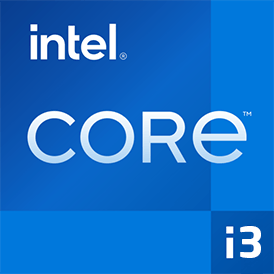

Which to select
It is time to pick the winner. What is the difference between AMD Athlon PRO 300GE vs Intel Core i3-10105? What CPU is more powerful? It is quite easy to determine – look at comparison table. The processor with more cores/ threads and also with higher frequency is the absolute winner!
CPU Cores and Base Frequency
Who will win between AMD Athlon PRO 300GE vs Intel Core i3-10105. The general performance of a CPU can easily be determined based on the number of its cores and the thread count, as well as the base frequency and Turbo frequency. The more GHz and cores a CPU has, the better. Please note that high technical specs require using a powerful cooling system.
CPU generation and family
Internal Graphics
Some manufacturers complement their CPUs with graphic chips, such a solution being especially popular in laptops. The higher the clock frequency of a GPU is and the bigger its memory, the better. Find a winner - AMD Athlon PRO 300GE vs Intel Core i3-10105.
Hardware codec support
Here we deal with specs that are used by some CPU manufacturers. These numbers are mainly technical and can be neglected for the purpose of the comparison analysis.
Memory & PCIe
These are memory standards supported by CPUs. The higher such standards, the better a CPU’s performance is.
Encryption
Data encryption support
Memory & AMP; PCIe
Thermal Management
The thermal design power (TDP), sometimes called thermal design point, is the maximum amount of heat generated by a computer chip or component (often a CPU, GPU or system on a chip) that the cooling system in a computer is designed to dissipate under any workload.
Technical details
Devices using this processor
You probably know already what devices use CPUs. These can be a desktop or a laptop.
Compatibility
Technologies and extensions
Virtualization technologies
Memory specs
Peripherals
The latter is used for creation of 3D models and forms. Cinebench R15 is used for single-core processor performance benchmark test. The hyperthreading ability doesn't count. It is the updated version of Cinebench 11.5. As all new versions, the updated benchmark is based on Cinema 4 Suite software
Cinebench R15 can be used for multi-core processor performance benchmark testing. The test produces precise and accurate results. This benchmark is the updated version of the Cinebench 11.5 which is based on Cinema 4 Suite soft.
Cinebench R20 is based on Cinema 4 Suite. It is the software used to create 3D forms. The benchmark runs for single-core test procedure without counting of hyperthreading ability.
It is the new version of the benchmark which is developed on the basis of Cinebench R15 (both versions are operated on the basis of Cinema 4 - the most popular 3D modeling software). Cinebench R20 is used for multi-core processor performance benchmark tests and hyperthreading ability.
Estimated results for PassMark CPU Mark
It tests entire and overall performance of the central processing unit (mathematical calculations, compression and decompression speed, 2D&3D graphic tests). Please note that data can differ from the real-world situations.
iGPU - FP32 Performance (Single-precision GFLOPS)
This test serves for determining the performance of integrated graphics in Intel and AMD processors. The result is the estimated computing power in the Single-Precision FP32 mode















